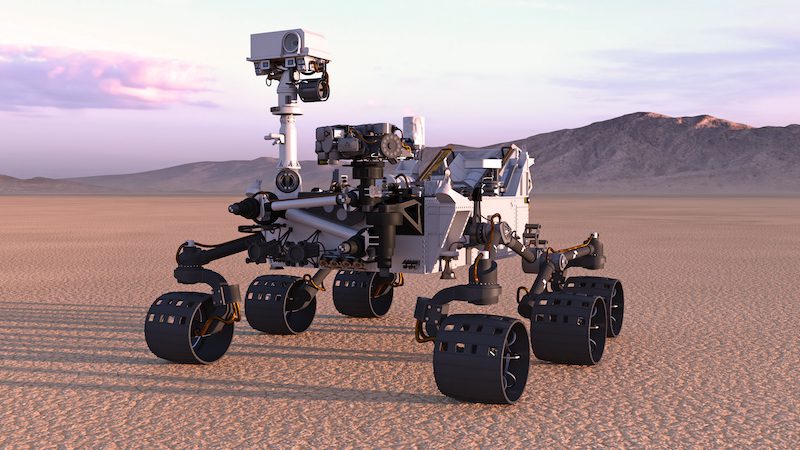Emerging Space Technologies Call for Harsh Environment Connectors
As current space systems advance and new technologies develop, the space industry will evolve drastically over the next few decades. The United States, Russia, and China have major space programs; the EU, India, Canada, Japan, and others are growing their footprint in space; and 80 countries have satellites projects. By 2040, Citigroup expects the global space industry to reach $1 trillion in revenue.
With the advent of commercial space travel, public interest in extraterrestrial life, and new discoveries from the James Webb Telescope, space continues to intrigue scientists and the public, leading to further investigations and missions. Humans are pushing the boundaries of space exploration to further our understanding about Earth and our solar system, with planetary research, asteroid missions, and returning to the moon the focus of current scientific work. Three well-known space applications are important to space research: satellites, launchers, and rovers. For these technologies to succeed in the harsh environments beyond Earth, space grade interconnects keep these technologies performing reliably through the rigors of launch, the long-term stresses of space, and for some applications, a return to Earth.

Satellites
Satellites can oversee large areas of Earth, even in places that couldn’t be seen otherwise. They can be found at various altitudes depending on their purpose and intended orbit. Whether in low Earth orbit (LEO), medium Earth orbit (MEO), geostationary orbit (GEO), highly elliptical orbit (HEO), or polar orbit, these devices are used for communication, navigation, surveillance, monitoring of natural disasters, and weather forecasting for Earth and space observations, technological development, and more.
These satellites collect and transmit data and images, allowing us to track environmental changes by measuring temperature, pressure, wind speed, land surfaces, and oceans. These devices provide data that can be used to measure the effects of global warming, such as ice melting and rising sea levels. Satellites also capture detailed images of the sun, stars, black holes, and Earth, helping scientists understand our solar system. Thousands of satellites are orbiting the Earth at this very moment.
Launchers
Launchers play a critical role in the transportation of payloads to space stations and the deployment of satellites into Earth’s orbit. To accomplish this, they must endure significant challenges during liftoff, including intense vibrations, shocks, and extreme temperature fluctuations. This objective necessitates meticulous design and engineering, and the selection of space-grade interconnects.
The core components of a rocket comprise a payload fairing for protective enclosure, stages for propellant consumption, propellant itself, and essential systems like guidance and control for maintaining trajectory and stability in-flight, as well as telemetry and tracking systems to provide real-time data on status, position, and performance throughout the launch process. Additionally, ignition and separation systems are crucial for initiating engines and separating stages as required for a successful launch operation. Through the orchestrated interplay of these elements, launchers enable the expansion of human capabilities beyond our planet’s boundaries.
Rovers
Robotic vehicles specially designed for exploration and investigation purposes have become essential assets in our endeavors to study the planets and moons within our solar system. These machines play a vital role in collecting crucial data from environments that could pose challenges or risks to human astronauts. By venturing into diverse landscapes, such as sand dunes, craters, and other hazardous terrains, rovers contribute significantly to our understanding of celestial bodies.
Wheels or tracks allow rovers to traverse a planet’s surface with precision. Outfitted with an array of cameras, sensors, and drills, they can meticulously study soil composition, rock formations, atmospheric conditions, and other intricate details. Mars has been a focal point for such exploration with the Spirit, Opportunity, and Curiosity rovers. These intrepid machines have amassed invaluable insights into Mars’ geology, climate history, and potential habitability, expanding our horizons about the Red Planet. The rovers on these missions must have durable technology to withstand the demanding nature and threatening conditions of extraterrestrial environments.
Harsh space environment
Navigating the harsh environment of space presents numerous challenges. Any object that ventures into orbit must confront the constant threat of radiation, often emitted by nearby stars, contributing to the overall heat. Temperatures fluctuate inconsistently and dust from meteor showers has a sandblasting effect.
One component is key to the success or failure of any space excursion: suitable space-grade connectors. High-performing, reliable electrical connectors are needed for these applications to operate effectively in the harsh space environment.
Hermetically sealed connectors
Space-grade connectors operate in severe weather conditions, high altitudes, and extreme temperatures and pressures. They are also air and gas-resistant and capable of protection against moisture and bacteria.
Satellites, rockets, rovers, and spacesuits depend on hermetically sealed space-grade connectors — circuits, sensors, switches, ignitors, transistors, microchips, and more all rely on this high-reliability connector. In aerospace equipment, hermetically sealed connectors are crucial components for engines, landing gear, wing flaps, tail rudders, and instrument panels.
Space-grade connectors are crucial to spaceflight and must pass strict testing standards, including two requirements that set them apart from other connector solutions: outgassing and residual magnetism. Outgassing is a phenomenon that occurs when plastics and elastomers release volatile organic compounds (VOCs) that can put the performance of mission-critical equipment at risk. For a connector to qualify as a space connector, the VOCs must be extracted. This is typically accomplished by baking the connectors at an elevated temperature in a vacuum-sealed oven. After this process is complete, the connectors are tested to verify that they meet the applicable standards (e.g., NASA, ESA, or military) for outgassing.
Solutions for Space Exploration
MIL-DTL-38999 connectors are miniature, high-density circular connectors made for some of the most demanding conditions and harshest environments imaginable. These electrical connectors have been designed to meet very strict Mil-Spec requirements set forth by the U.S. Department of Defense to establish an industry standard for performance and reliability.
D-Subminiature connectors work well for data, signal, and power transmission. They have parallel rows of contacts surrounded by a D-shaped metal shell. This metal shell not only helps with proper mating but also provides support, assists in ensuring correct orientation, and can also provide EMI shielding. D-Sub connectors typically have threaded nuts that accept screws to ensure a tight fit and to further relieve any mechanical strain, ensuring the integrity of the connection.
Micro-miniature circular connectors offer the same performance as their larger counterparts but are much smaller in physical size. As a result of their compact design, they can provide significant savings in both space and weight requirements while ensuring a reliable connection that can handle shock, vibration, and other environmental conditions.
Visit PEI-Genesis to learn more about harsh environment solutions for space applications.
Like this article? Check out our other How to Specify, Mil/Aero Market articles, and our 2023 Article Archives.
Subscribe to our weekly e-newsletters, follow us on LinkedIn, Twitter, and Facebook, and check out our eBook archives for more applicable, expert-informed connectivity content.








